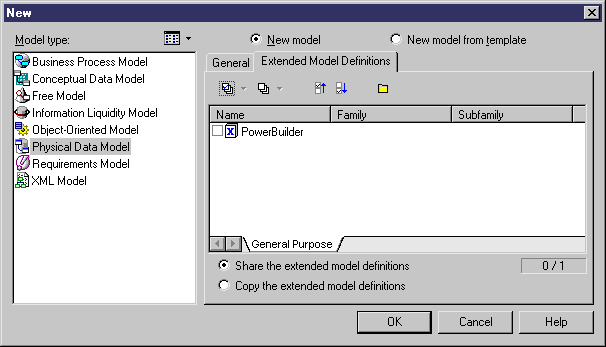Extended model definitions (.XEM files) provide means for customizing and extending PowerDesigner metaclasses, parameters and generation. Extended model definitions are typed like models in PowerDesigner. You create an extended model definition for a specific type of model and you cannot share these files between heterogeneous models.
Extended model definitions may contain:
-
Extended attributes for applicable objects in order to further define their properties
-
Stereotypes to define extended dependencies established between model objects
For more information on extended dependencies, see Working with data model extended dependencies.
-
Generation targets and commands to complement the generation of an object model, or to perform an extended generation
When you create a new data model, or when you reverse engineer into a new data model, you can select one or several extended model definitions and attach them to the model from the Extended Model Definitions tab of the New dialog box.

You can choose one of the following options:
|
Option |
Definition |
|---|---|
|
Share |
Current extended model definition constantly refers to the extended model definition stored in the Resource Files\Extended Model Definitions directory. Any changes made to the extended model definition are shared by all linked XEM |
|
Copy |
Current extended model definition is a unique copy of the extended model definition stored in the Resource Files\Extended Model Definitions directory. The current extended model definition is independent of the original one, so modifications made to the extended model definition in the Resource Files\Extended Model Definitions directory are not available to the copied XEM. This one is saved with the PDM and cannot be used without it |
For more information on extended model definitions, see "Extended Model Definitions" in the Resource Files and the Public Metamodel chapter of the Customizing and Extending PowerDesigner manual.